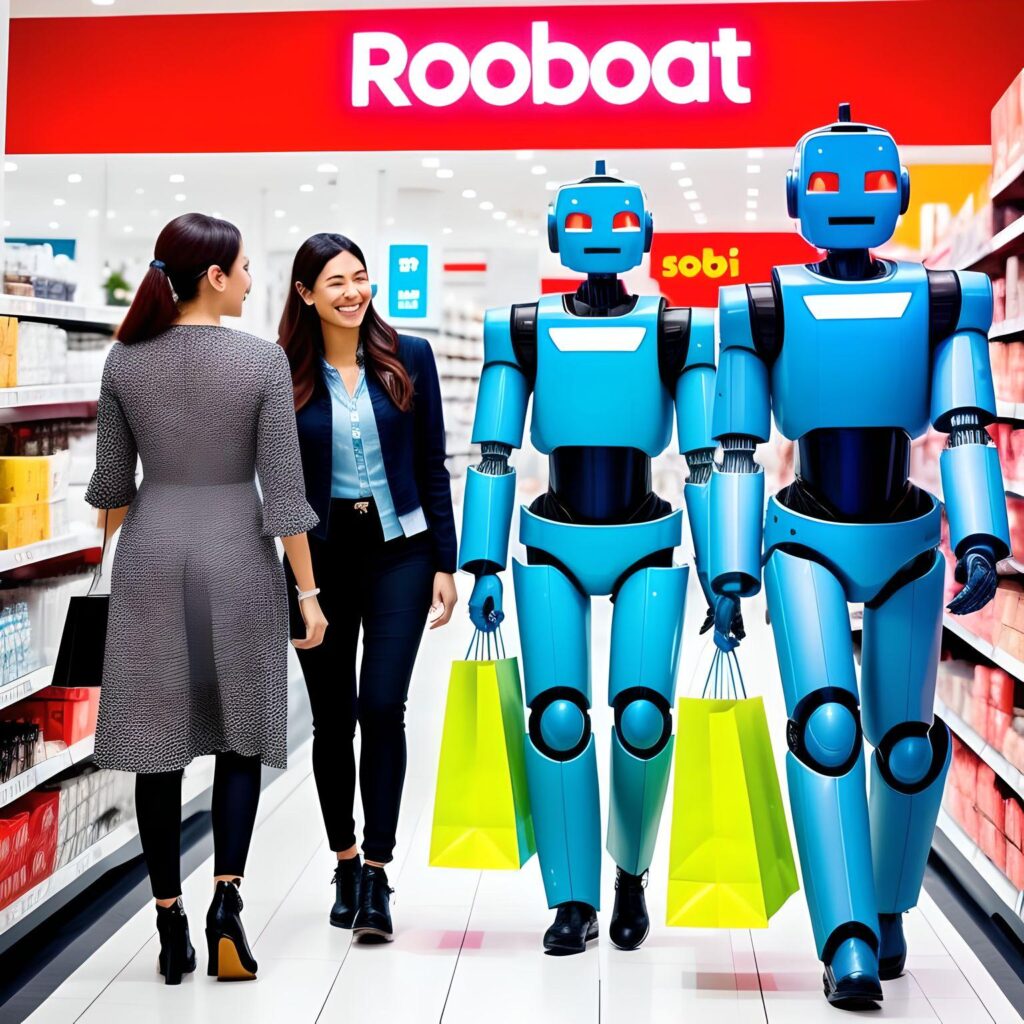As Search Labs begins allowing more and more people to test its new generative AI tool, SGE, which is set to overhaul the current search landscape, SEOs are starting to pick up on potential trends and patterns the new system reveals in its redesigned SERPs.
Those who have been reading up on SGE may be aware that ecommerce brands will face the biggest challenge when and if this new technology is implemented globally. That’s because, while there are excellent opportunities to rank in the top section of the SERP, the rationale Google’s AI is using to select its top results are still being deciphered.
With such limited information about SGE at present, coming up with an authoritative strategy wouldn’t be wise. However, there are some reverse-engineered tricks that ecommerce brands can pick up right now to ensure that they stay ahead of the AI curve.
Focus on the person, not the product
Google’s blog introducing SGE says: ‘With generative AI in Search, we can help you understand the full picture when you’re shopping, making even the most considered and complex purchase decisions faster and much easier.’
SGE is overhauling shopping SERPs so that users don’t have to click around as much to find the information they need. For example – currently, if you were to seek a 4k camcorder, the traditional SERPs would show a list of places to buy a camcorder, with buying guides either side of the shopping carousel.
However, the SGE response will give searchers a top-level overview of the factors they need to consider. How can you make this approach work in your favour? Create a marketing persona for every single one of your products.
Don’t just think about how camera X has 1080p recording quality, an infrared flashlight and a 12MP sensor. Consider how the camera would be used by someone. How might someone benefit from that flashlight? When would the sensor come in handy?
Paint a picture of the camera in action – not just as a piece of tech filled with features that make it great for anyone who’s got money to spend.
Don’t trust that results will always be the same
Google goes on to say: ‘When searching for a product, you’ll get a snapshot of noteworthy factors to consider and products that fit the bill.’
Some SEOs out there have started suggesting ‘hacks’ to boost sites into the cited sources for SGE responses. One of them is to look in detail at the information SGE provides about a topic, then really hone in on those points when creating product listings and associated content.
For example, if you were in the camcorder business and noticed that SGE was suggesting that users consider factors such as the lens and sensor, you may decide to shoehorn in this keyword wherever you can across your site.
However, it’s important to remember that SGE is putting the user first. It isn’t looking for listings which tick keyword boxes – it seeks sites which provide a comprehensive set of information about a product.
It’s also likely that SGE will adapt its generative responses according to user search trends which emerge. So if users start researching ‘best 4k camcorder’ and are largely clicking onto reviews which discuss battery life, the AI may begin prioritising battery life as an essential factor for its generative response in the future, and disregard the lens and sensor details.
Also, more generally speaking, SGE is an experiment. If and when we start seeing it en masse, we shouldn’t take its first form as set in stone. As it grows and develops, it will change. So don’t go for any ‘hacks’ which could easily unravel further down the line.
Don’t be afraid to list cons as well as pros
Here’s an important takeaway that people who are testing SGE with Search Labs are discovering – the sites shown in the AI Snapshot carousel do not match up with those seen in the classic version of the SERP.
Why has generative AI plucked out different links for its carousel? SEOs are beginning to reverse engineer this process where possible, and one of the reasons they’re ruminating on seems to be as follows.
SGE responses will give searchers a well-rounded explanation of what to consider in a product. This means they won’t just be upselling a product, but they will also be outlining what people should look out for.
If your product listing or associated content clearly defines where a product isn’t suitable for someone, or outlines the drawbacks a person should be aware of, it has a chance of being picked by SGE as a cited source in its Snapshot carousel.
What people are looking for is honesty and authenticity – and so, creating content which reflects these values is likely to send positive signals to Google’s generative AI when it compiles a response.
Get your reviews in – make them authentic and balanced
Remember our discussion about marketing personas? You’re painting a picture of someone specific who would benefit from your product. Let’s take Google’s example from their blog about the Shopping Graph.
‘Let’s say you’re looking for a puffer jacket. Maybe you’d love a women’s red puffer coat that’s cropped, shiny and has a fleece hood. You also want the coat to be suitable for extreme weather and lightweight.
‘To narrow down your options, the Shopping Graph…uses machine learning to understand relevant, nuanced characteristics like, in the case of your coat, packability, how it typically performs in cold temperatures and whether it’s made from sustainable materials.’
How can we leverage our marketing personas and reverse engineer the Shopping Graph’s machine learning process? By having reviews – user generated content – confirming the features you’re upselling for your marketing personas in your product description.
Optimising both product copy and bringing in reviews of this nature will confirm to Google that your item is worthy of appearing as recommended at the top of the generative AI SERP.
Contribute to discussions in your niche
Instead of trying to bring people to your site and drive them towards the purchase button, consider seeking them out instead. Where are they hanging out? Are camcorders being discussed in a dedicated subreddit? Are there questions about a product you happen to sell, waiting to be answered on Quora?
Google will be prioritising user-generated content, or UGC, with its Perspectives feature being rolled out alongside SGE. By establishing one or more people from your brand as thought leaders, who are full of knowledge about your ecommerce niche, you can ensure searchers will be reading genuine content that will persuade them to seek out your brand as a result of trusting the people behind it.
After all, as Google says in its blog about Perspectives: ‘when it comes to what’s most helpful out of all the information out there, we know that for so many questions, you want to hear what other people have to say.’
Keep your images fresh, relevant and optimised
Google’s blog about the Shopping Graph states that it: ‘scans billions of listings while also pulling relevant data from the web — like images, descriptions, reviews and YouTube videos.’
A clue is tucked away in the quote – the word ‘images’. SEOs already know about the value of optimising images for search, but now there is even more which can be done to ensure visual assets are genuinely useful.
The rise of image AI has meant that many creators are avoiding complicated copyright issues by generating their own illustrations to complement their work. However, e-commerce brands will always need to rely on unique and accurate product imagery.
When considering market personas for products, think about how your images can complement this strategy. If you have positioned a puffer coat as ideal for winter conditions, ensure at least one photo shows it being worn in cold weather. If your camcorder is great for cycling, snap some photos of it being used on the trails.
Gone are the days when picture editors and SEOs would sit on opposite sides of an office. With the development of SGE, it’s more important than ever to ensure that multimedia is reflecting the signals generative AI is looking for.
Discard the ‘blog-first’ approach
We live in a world where Gen Z are primarily using social media to inspire their shopping choices. They use their socials for discovery before Google products. Pretty much everyone has a smartphone with mobile data, and our lives are busy, with little time for breaks.
Sure, sometimes it may be appropriate to read a blog – but these days, people are seeking user-generated content above all else, and Google will be prioritising this shift in its SERPs.
When creating a content strategy, consider how you’ll appear to people beyond your site. Don’t focus primarily on writing a set number of blogs per week and expect your site to rank purely based on that.
SGE is changing the search landscape dramatically for ecommerce sites – and brands have a lot of work to do if they want to keep up.












